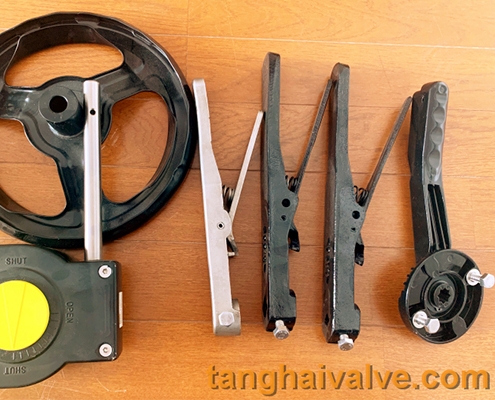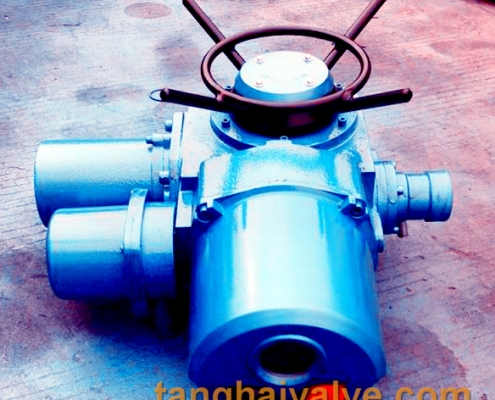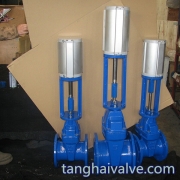Valve actuator / actuation -(1)-introduction
The valve actuator is an indispensable part of the valve automatic control system. Its function is to accept the control signal sent by the controller, change the size of the controlled medium, so as to maintain the controlled variable at

21 manual-actuator-lever-handwheel-worm-gear-box
the required value or within a certain range. According to their energy form, actuators can be divided into three categories: pneumatic, hydraulic and electric. Pneumatic actuators use compressed air as energy source. They are characterized by simple structure, reliable action, stable operation, large output thrust, convenient maintenance, fire and explosion prevention, and low price. Therefore, they are widely used in chemical, paper, and oil refining production processes. It can be conveniently used in conjunction with passive instruments. Even when using electric instruments or computer control, as long as the electric signal is converted into a standard pressure signal of 20-100kPa by an electric-pneumatic converter or an electric-pneumatic valve positioner, pneumatic actuators can still be used. The electric actuator has convenient energy access and rapid signal transmission, but the structure is complex and the explosion-proof performance is poor. The hydraulic actuator is basically not used in the chemical, oil refining and other production processes. It is characterized by a large output thrust.
Definition of valve actuator:
The actuator is a combination of the actuator and the control valve in the automatic control system. Its role in the automation control system is to receive the signal from the regulator or computer (DCS, PLC, etc.), and adjust the flow of the process medium based on its position and characteristics in the process pipeline, so that the controlled automation instrument is in production Within the range required by the process.

electric actuator for butterfly valve
Basic composition of valve actuator:
Types of valve actuators:
In the process control system, the actuator is composed of two parts: the actuator and the automatic adjustment mechanism. The automatic adjustment mechanism directly changes the parameters of the production process through the actuator, so that the production process meets the predetermined requirements. The actuator accepts the control signal from the controller and converts it into the output of the drive adjustment mechanism (such as angular displacement or linear displacement output). It also uses appropriate actuators, but the requirements are different from the adjustment mechanism. The actuator is installed directly on the production site, sometimes with harsh working conditions. Whether it can maintain normal operation directly affects the safety and reliability of the automatic adjustment system.
The structure of the valve actuator:
A device in an automated control technology tool that accepts control signals and exerts a control function on the controlled object. According to the driving energy used, the actuators are divided into 3 categories: pneumatic, electric and hydraulic actuators.
TH Valve is a professional manufacturer of butterfly valve, gate valve, check valve, globe valve, knife gate valve, ball valve with API, JIS, DIN standard, used in Oil, Gas, Marine industry, Water supply and drainage, fire fighting, shipbuilding, water treatment and other systems, with Nominal Diameter of DN50 to DN1200, NBR/EPDM/VITON, Certificates & Approvals: DNV-GL, Lloyds, DNV, BV, API, ABS, CCS. Standards: EN 593, API609, API6D
Related news/knowledge:
Valve actuator / actuation -(2)-classification and working principle;
The matching function and principle of pneumatic valve accessories;
Valve installation instructions and process precautions;
Valve actuator / actuation -(3)-classifications

 tanghaivalve.com
tanghaivalve.com

 © Copyright 2020 Tianjin Tanghaidongyang Valve Co., Ltd. All Rights Reserved.
© Copyright 2020 Tianjin Tanghaidongyang Valve Co., Ltd. All Rights Reserved.